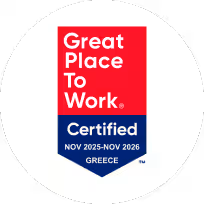Expense Management Software Market Outlook

Expense management software has evolved from a back-office utility into a core component of modern financial governance. According to anonymized expert interviews conducted by Dialectica, CFOs and senior finance leaders increasingly treat expense platforms as strategic control layers that support compliance, real-time visibility, and decision discipline across distributed organizations.
Insights shared by interviewed executives suggest that market momentum is no longer driven primarily by digitization or first-time adoption. Instead, growth reflects rising expectations around financial transparency, tighter internal controls, and the need to manage spend dynamically across hybrid workforces and international operations.
Quick Summary Table
Market Size and Growth Momentum in Expense Platforms
Insights from anonymized expert interviews conducted by Dialectica indicate that recent growth in the expense management software market reflects a strong post-pandemic rebound combined with structural changes in how organizations manage spend. Executives observed that the temporary slowdown during the pandemic, driven largely by reduced business travel, has been followed by accelerated adoption as finance teams reassert control over increasingly complex spending environments.
Interviews suggest that recent growth rates have been elevated by a catch-up effect, as organizations reinvest in expense controls that were deprioritized during periods of limited travel and constrained operations. As a result, a key diligence question is whether current momentum represents sustainable demand or normalization following underinvestment.
Importantly, experts consistently noted that expansion is now driven less by first-time adoption and more by platform replacement, consolidation of fragmented tools, and upgrades to support real-time analytics and policy enforcement.
Key takeaway: Near-term growth reflects both rebound dynamics and structural governance needs, making it critical to distinguish cyclical recovery from durable demand.
Industry Structure and Fragmentation in Expense Management Software
Experts participating in Dialectica interviews described a dual-layer market structure. A small group of global vendors provides the core technology platforms, while regional implementation partners and local specialists control much of the customer-facing adoption.
This fragmentation is particularly pronounced in Europe, where local partners play a central role in tailoring platforms to country-specific tax rules, labor regulations, and reimbursement practices. According to interviewed executives, vendor success in these markets often depends as much on partner execution as on platform capabilities.
For diligence teams, this structure introduces both opportunity and risk. Strong local partnerships can accelerate adoption and deepen customer relationships, while overreliance on a narrow partner base can constrain scalability or increase churn risk if relationships weaken.
Innovation Trends and Platform Evolution in Expense Platforms
Interviewed executives observed that innovation in expense management software has shifted away from headline feature expansion toward operational robustness and workflow automation. AI-enabled receipt capture, transaction matching, and policy enforcement are now widely expected capabilities rather than sources of differentiation.
What increasingly separates platforms is their ability to integrate cleanly with ERP systems, corporate cards, and financial planning tools, while maintaining reliability across mobile and distributed environments. Experts emphasized that buyers place growing weight on usability, implementation speed, and adaptability to local compliance requirements.
As a result, expense platforms are evolving into embedded components of broader financial operating systems, rather than standalone tools. As a result, expense platforms are becoming embedded components of broader financial operating systems.
Distribution, Pricing, and Profitability Dynamics
According to Dialectica insights, distribution strategies in the expense management software market are increasingly shaped by partner networks and long-term customer relationships. Many vendors rely on regional implementers to drive adoption, particularly in jurisdictions with complex regulatory environments.
Profitability is closely linked to retention, as switching costs remain high due to data migration, workflow redesign, and user retraining. Executives noted that pricing discussions increasingly focus on demonstrated value and utilization, rather than feature counts alone.
What Experts Say vs. Common Market Assumptions
Market assumption: Expense software growth is driven primarily by travel recovery.
What experts say: Interviews suggest that demand reflects a broader recalibration of financial control and governance, with travel representing only one component of total spend visibility.
Market assumption: Feature innovation is the main source of differentiation.
What experts say: Executives emphasize reliability, compliance alignment, and integration over incremental feature releases.
How Expense Management Software Is Used in Diligence
Private equity teams use expert interviews to test whether reported growth reflects sustainable adoption or post-pandemic normalization, assess dependence on regional partners, and evaluate customer stickiness in replacement-driven markets.
Corporate strategy leaders focus on scalability, partner coverage across geographies, and alignment with ERP and financial planning systems, particularly where expense platforms are positioned as part of a broader finance transformation.
For deeper intelligence: Origin → https://www.dialectica.io/origin/
Common Investor Questions
Q1. Is the expense management software market saturated?
Experts suggest that while adoption is widespread, replacement-driven growth remains active as finance teams upgrade control environments.
Q2. What drives churn in this market?
Churn is typically linked to broader finance system overhauls rather than dissatisfaction with standalone expense features.
Q3. How important is AI in purchasing decisions?
AI capabilities are increasingly expected but rarely decisive without strong governance fundamentals.
Q4. Where does differentiation still exist?
Experts point to implementation quality, integration depth, and policy flexibility as key differentiators.
What Investors Learn from Dialectica Insights
Insights from anonymized expert interviews help investors understand how expense management software functions as a control layer within modern finance organizations. These perspectives clarify adoption drivers, switching dynamics, and the operational realities behind reported growth.
Strategic Implications for the Expense Management Software Market
The expense management software market is transitioning from expansion to optimization. Strategic advantage will accrue to platforms that support real-time financial discipline, integrate cleanly into finance stacks, and align with evolving governance expectations.
In summary, expense management software is no longer simply about tracking spend. It is becoming a foundational tool for financial accountability and resilience.
-p-1600.avif)










.avif)

.avif)








-01.avif)


